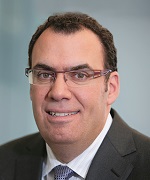The long-term sustainability of Australia’s high non-medical underwriting limits and transfer terms has been questioned by an international expert.
President and CEO of RGA Canada, Alain Néemeh, said while it was normal to see some progression in the area of non-medical limits over time, he could not understand why Australian insurers have raised limits by 150% over the past five years.
Speaking to an audience of senior insurance industry stakeholders at the recent Financial Services Council Annual Conference, Mr Néemeh addressed the issue of sustainability. He said he had heard a lot about agents’ commissions and clawbacks, but suggested that the industry additionally needed to look at a number of different areas for a solution to its sustainability problems.
“Are agent commissions the big issue, or are there a number of other issues that contribute, and did we allow these things to actually happen in the market?” he asked.
It’s not clear why non-medical limits need to go up by 150%
One of these other issues, highlighted by Mr Néemeh as a source of significant concern, was what he described as Australia’s ‘generous underwriting’.
“In terms of generous underwriting limits, you can see some progression from 1997 to 2007, and I think that’s normal, it’s evolutionary.
“But when you look at the changes that have occurred from 2007 to 2012, from an outsider’s perspective, they’re difficult to understand. Earnings of individuals have increased around 21% over that time period. It’s not clear why non-medical limits need to go up by 150%,” Mr Néemeh said.
“I would argue at some point that the underwriting becomes weaker and weaker since you lose some of the value of upfront selection.”
In comparison, Mr Néemeh said that the Canadian market was talking about moving its underwriting limits above $500,000 per policy.
“There’s certainly been evolution and innovation here, in terms of the underwriting limits and requirements. But is this a trend that is sustainable?”
… a fundamental rethink is necessary
Mr Néemeh said he was also unaware of any other insurance market which operated with transfer terms that matched the Australian market. “You’ve got to ask yourself why would you take a $3m risk onto your books without underwriting it. It’s just not something that I’d be comfortable with.”
He urged the Australian insurance industry not to focus on exact solutions, but to identify the problems contributing to the sustainability risk and demonstrate strong leadership by taking action.
“It’s time to act. It’s not just commissions or rating houses or any one thing; rather a fundamental rethink is necessary. The industry is in a good place to do that, and does control its destiny, but it’s time to act now.”





Alain Néemeh makes some very valid points regarding medical requirement limits and takeover terms.
Finding the balance between ease and speed of process for customers and sensible risk management can be a difficult task. Review of medical requirement limits should involve a cost/benefit analysis of the value of various underwriting tools as well as an analysis of the process from the customers perspective. Perhaps the competitive elements of our industry have pushed the pendulum too far and we need to review some matters. Whether the commercial market will allow that to happen is a difficult question.
One could argue that takeover terms are not based on sound risk management principles and therefore should be one element in the discussions in respect of both persistency and actuarial experience.
Tony O’Leary, Executive Officer, ALUCA
Perhaps the Australian Insurers should publish their annual costs of obtaining medical exams and blood tests etc simply for underwriting purposes. I’ve seen several instances where a simple medical exam by a suburban GP exceeded $350 and PMRs from suburban GPs exceeding $400. Medicos know there is no ‘scale’ fee and they also know Insurers need the GP’s report before they can fully assess an application, so some of the more ‘commercially minded’ GPs take advantage of their important position in the underwriting process and charge high fees for work which usually takes them much less than an hour to complete, particularly, in the case of PMR preparation where nearly every GP’s patient records are computerised and can be downloaded and printed in a matter of minutes.
Mr Neemah has let the cat out. Despite Brogden’s blatherings, sustainability is not just about up-front commissions and lapse periods – those are marginal at best in the sustainability debate. Brogden promoted the commissions debate because it was good politics and it appealed to the ISN/Shorten claque, and he felt his industry needed to offer up a sacrifical lamb. Thats advisers, who else.
Its also fair to note re-insurers are always nervous about increased non-medical limits, because that increases THEIR part of the non-underwritten risk. Insurers on the other hand bear the costs of PMRs, not the re-insurer, as I understand the issue. Its all about treaty limits etc
Its true the industry gossip says that Take-over-terms are still around, but re-insurers could stop that dead if they wished. I once asked the then head of a well known re-insurer if he was comfortable with seeing a large risk of over $3m life cover shopped around every year between companies for which he was the re-insurer. He said he was annoyed that he acquired the same risk 3 times in 3 years, paid commission to the INSURER each time, but underwrote the case ONCE because it was done on take-over-terms.
When pressed, he agreed that something should be done, but not then. It was just another business risk and but at least it didn’t go to another re-insurer.
Its now obvious to all, as it has been for some time to a few, that group risk in ISN funds has never been priced correctly. Our danger as advisers is that the resulting panic could provide insurers with a blunt intstrument to once again attack advisers, even though it has nothing to do with retail advisers but everything to do with management egos at insurers who dabble in ISN group
The use of PMARs should be only a matter of underwriting judgment, but is often as a result of a dictum from upper management who would rather spend $350 for a report which confirms the clients disclosure and the professional risk advisers field underwriting feed back. The underwriting result was always easily predictable , and thus could be pre-sold by a competent risk adviser.
Some owners of insurance companies still do not understand they are in the long-term business of paying claims.
Well said BillB couldnt agree more. Its a whole industry problem, its in all of our interests to find sensible realistic & sustainable solutions. The behaviour of insurers needs checked – my additional comment is that this includes their willing participation in the ‘direct’ market which ultimately produces bad outcomes all round.
Comments are closed.